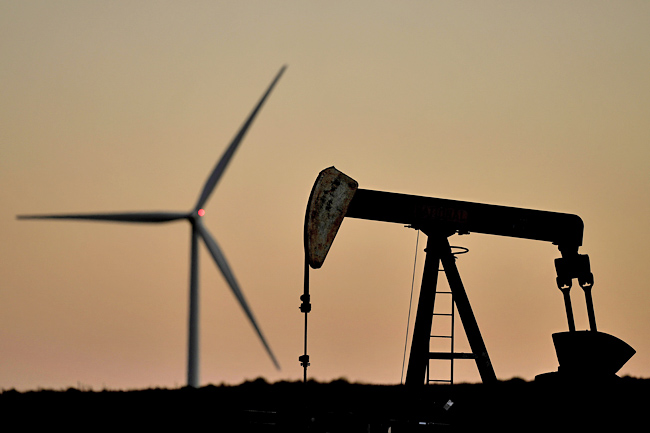BAKU (AP) – Even as Earth sets new heat records, humanity this year is pumping 330 million tonnes more carbon dioxide into the air by burning fossil fuels than it did last year.
This year the world is on track to put 41.2 billion tonnes of the main heat-trapping gas into the atmosphere. It’s a 0.8 per cent increase from 2023, according to Global Carbon Project, a group of scientists who track emissions.
Several United Nations (UN) reports said the globe must cut emissions by 42 per cent by 2030 to possibly limit warming to an internationally agreed-upon threshold.
This year’s pollution increase isn’t quite as large as last year’s 1.4 per cent jump, scientists said while presenting the data at the UN climate talks in Azerbaijan.
If the world continues burning fossil fuels at today’s level, it has six years before passing 1.5 degrees Celsius (oC) above pre-industrial levels, the limit agreed to at the 2015 climate talks in Paris, said study co-author Stephen Sitch. The Earth is already at 1.3oC, according to the UN.
“We clearly are not doing enough on a global scale to reduce emissions. It’s as simple as that,” said study co-author Mike O’Sullivan, a University of Exeter climate scientist.
“We need to massively increase ambition and actually just think outside the box of how we can change things, not be so tied to fossil fuel interests.”
Scientists used reported emissions from rich countries and oil industry data, O’Sullivan said. The 2024 figure includes projections for the last couple months or so.
The continued rise in carbon emissions is mostly from the developing world. India’s carbon pollution jumped 4.6 per cent in 2024, the scientists said.
Carbon emissions dropped in both the United States (US) and the European Union. They fell 0.6 per cent in the US mostly from reduced coal, oil and cement use. The US was responsible for 13 per cent of the globe’s carbon dioxide in 2024.
Historically, it’s responsible for 21 per cent of the world’s emissions since 1950, a figure that matters since the gas persists in the atmosphere for centuries. Twenty-two nations have shown steady decreases in emissions, O’Sullivan said.
The biggest emission drops from 2014 to 2023 were in the US, Japan, Germany, the United Kingdom and Ukraine. Europe, which accounts for seven per cent of the world’s carbon pollution, saw its carbon dioxide output drop 3.8 per cent from last year – driven by a big cut in coal emissions.
Global carbon emissions are well more than double what they were 50 years ago and 50 per cent than they were in 1999. Emissions have gone up about six per cent in the past decade.
“This is a needed reminder of the urgency with which we need to address the cause of the climate crisis,” said PowerShift Africa founder Mohamed Adow, who wasn’t part of the study.
“The problem is the fossil fuel industry is kicking and screaming for us to slow down and to keep them in business for longer.
“That’s why they poured money into Donald Trump’s election campaign.”
Carbon dioxide from humanity’s burning of coal, oil and natural gas amounts to nearly 1.2 million kilogrammes of the heat-trapping gas every second.





